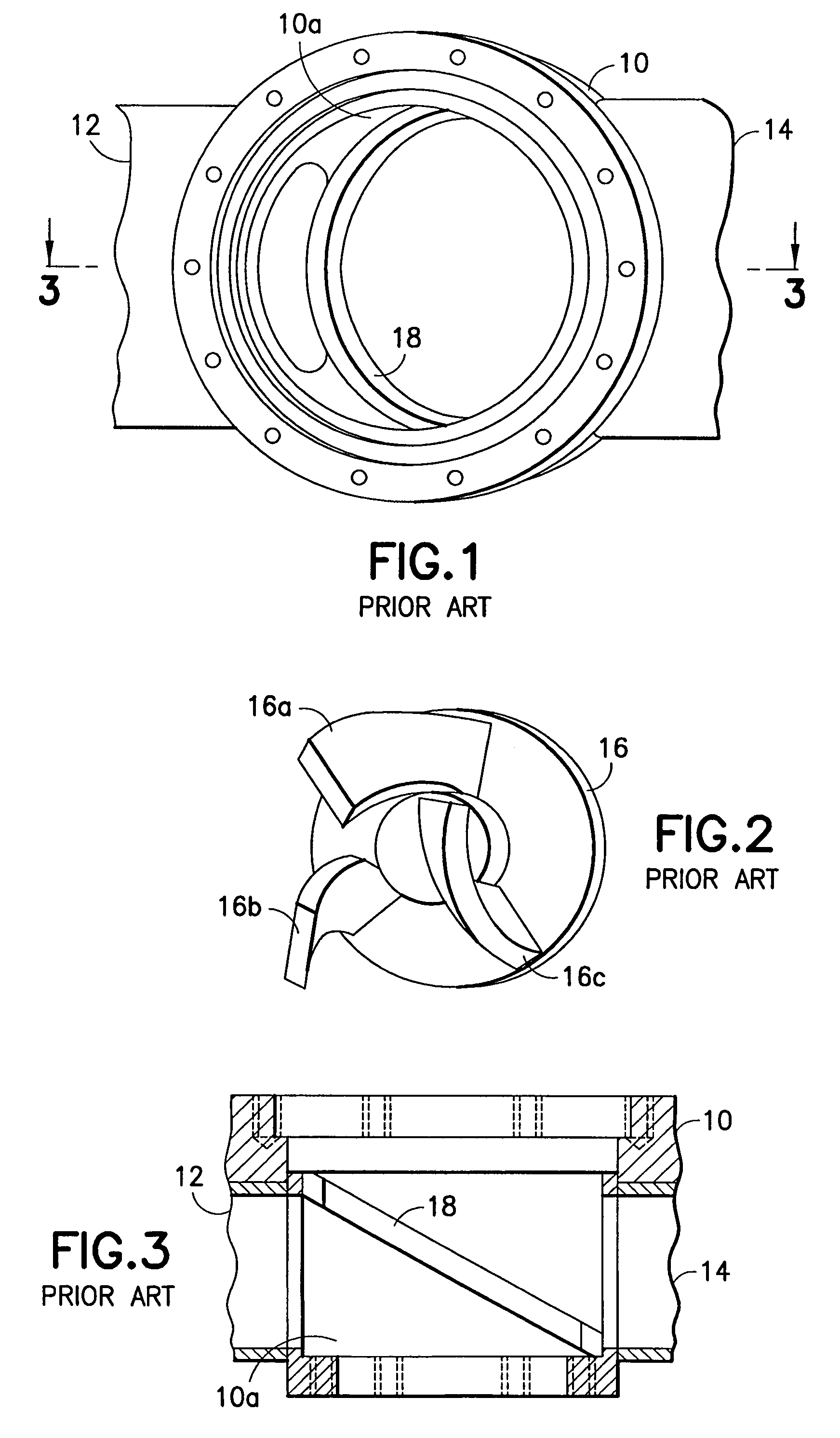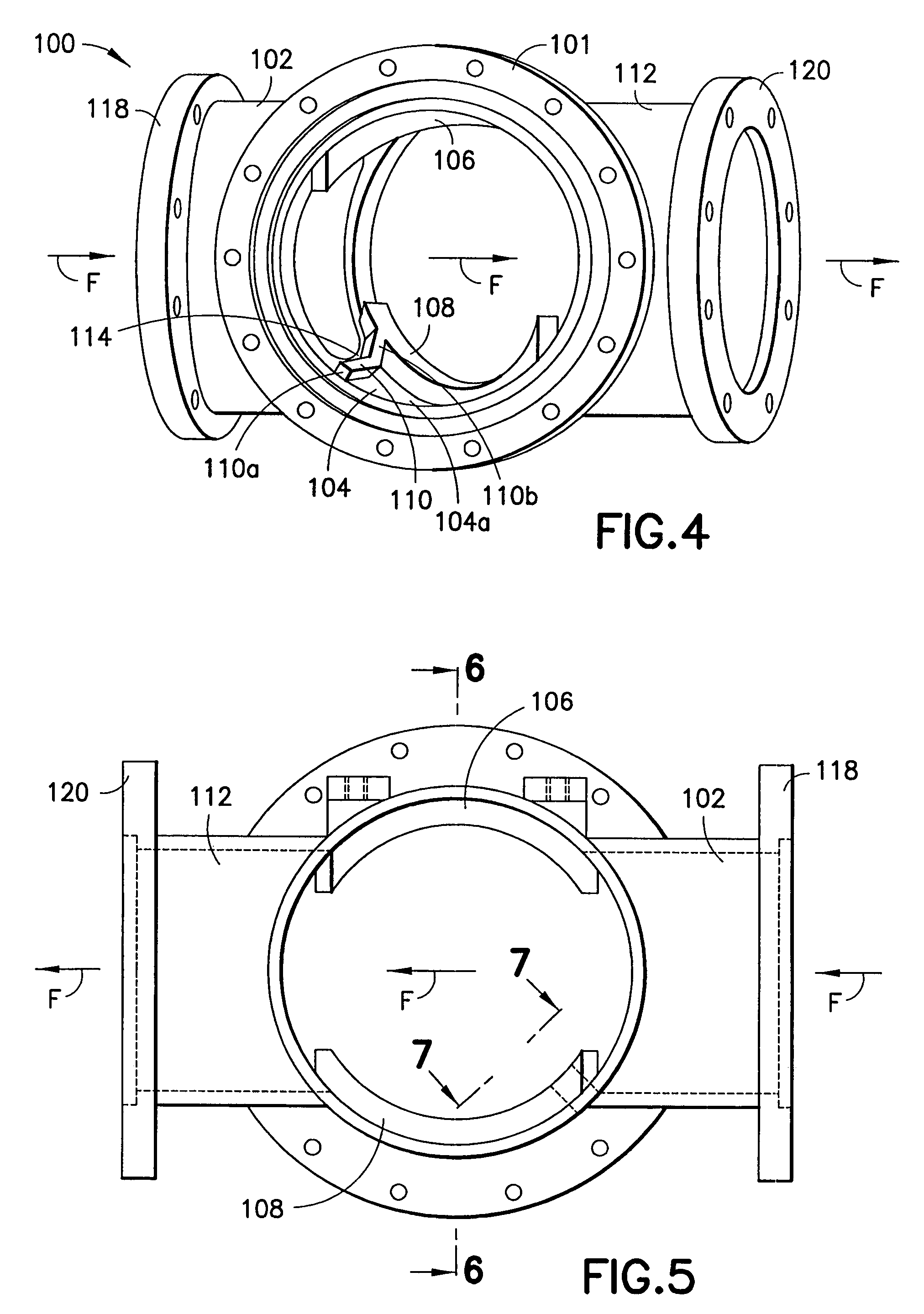Inline high turbulence mixer having combined oblique and transverse stationary vanes
a stationary vanes and mixer technology, applied in the field of mixers, can solve the problems of mixer design not mixing well, need to add additional chemicals or accept less than desired mixing performance, and mixer effectiveness, and achieve the effects of minimizing pressure pulsation, high turbulence, and reducing mixing difficulty
- Summary
- Abstract
- Description
- Claims
- Application Information
AI Technical Summary
Benefits of technology
Problems solved by technology
Method used
Image
Examples
Embodiment Construction
FIGS. 4–7: The Casing 100
[0031]FIGS. 4–7 show a casing generally indicated as 100 of an inline mixer according to the present invention. The casing 100 has a flange for receiving a rotor assembly shown and described in relation to FIG. 11. Similar elements in FIGS. 4–7 and 11 are labelled with similar reference numerals.
[0032]FIG. 4 shows the casing 100 having an inlet generally indicated as 102 for receiving one or more chemicals and a process flow media, not shown, an inner surface 104 defining a cavity therein, one or more stationary vanes 106, 108 arranged obliquely on the inner surface 104 in relation to the direction of flow (which is generally indicated by flow arrows labelled F) of the chemical and process flow media, a transverse stationary vane 110 arranged on the inner surface 104 substantially perpendicular to the direction of flow F of the chemical and process flow media, and an outlet 112 for providing a mixture of the chemical and process flow media from the casing 1...
PUM
 Login to View More
Login to View More Abstract
Description
Claims
Application Information
 Login to View More
Login to View More - R&D
- Intellectual Property
- Life Sciences
- Materials
- Tech Scout
- Unparalleled Data Quality
- Higher Quality Content
- 60% Fewer Hallucinations
Browse by: Latest US Patents, China's latest patents, Technical Efficacy Thesaurus, Application Domain, Technology Topic, Popular Technical Reports.
© 2025 PatSnap. All rights reserved.Legal|Privacy policy|Modern Slavery Act Transparency Statement|Sitemap|About US| Contact US: help@patsnap.com



